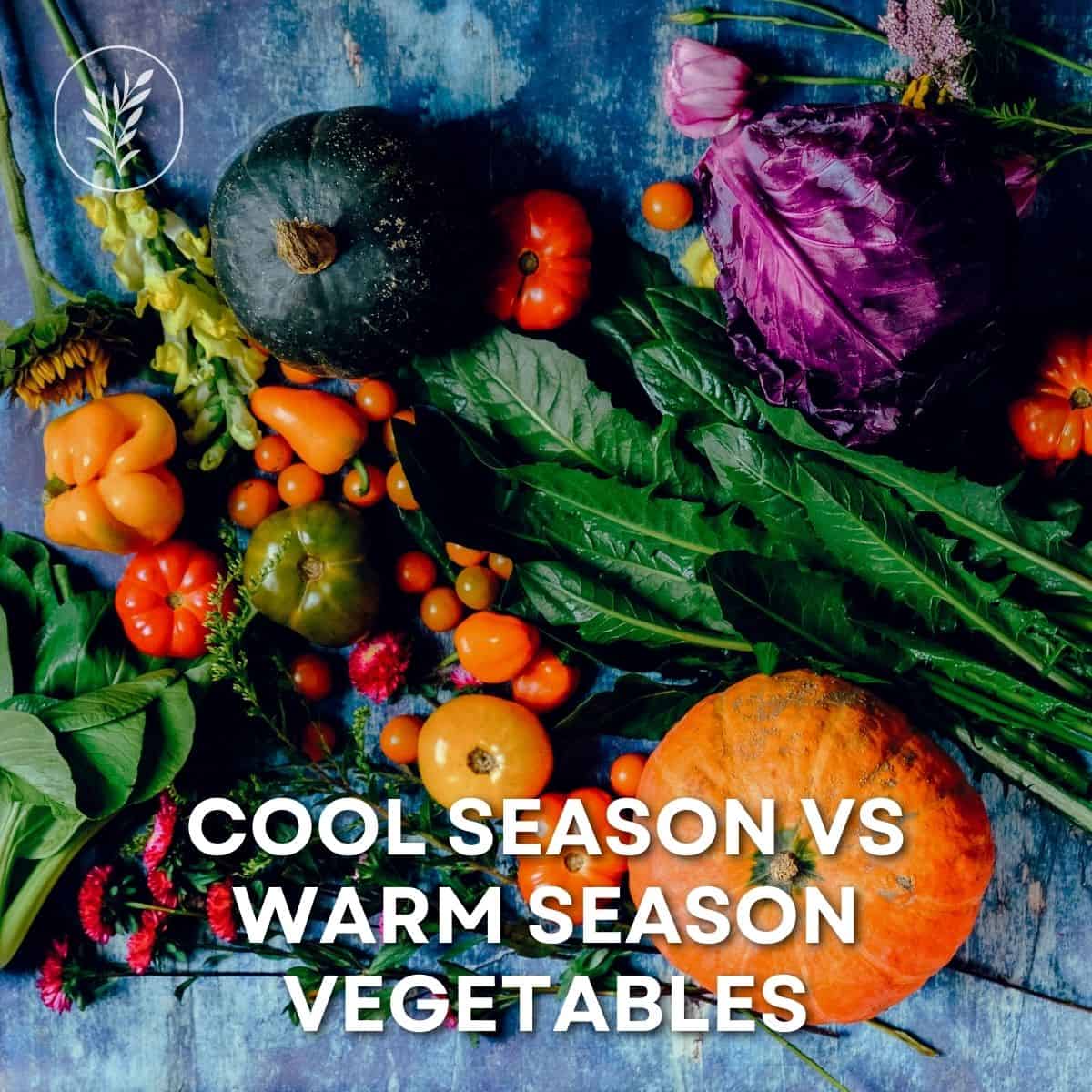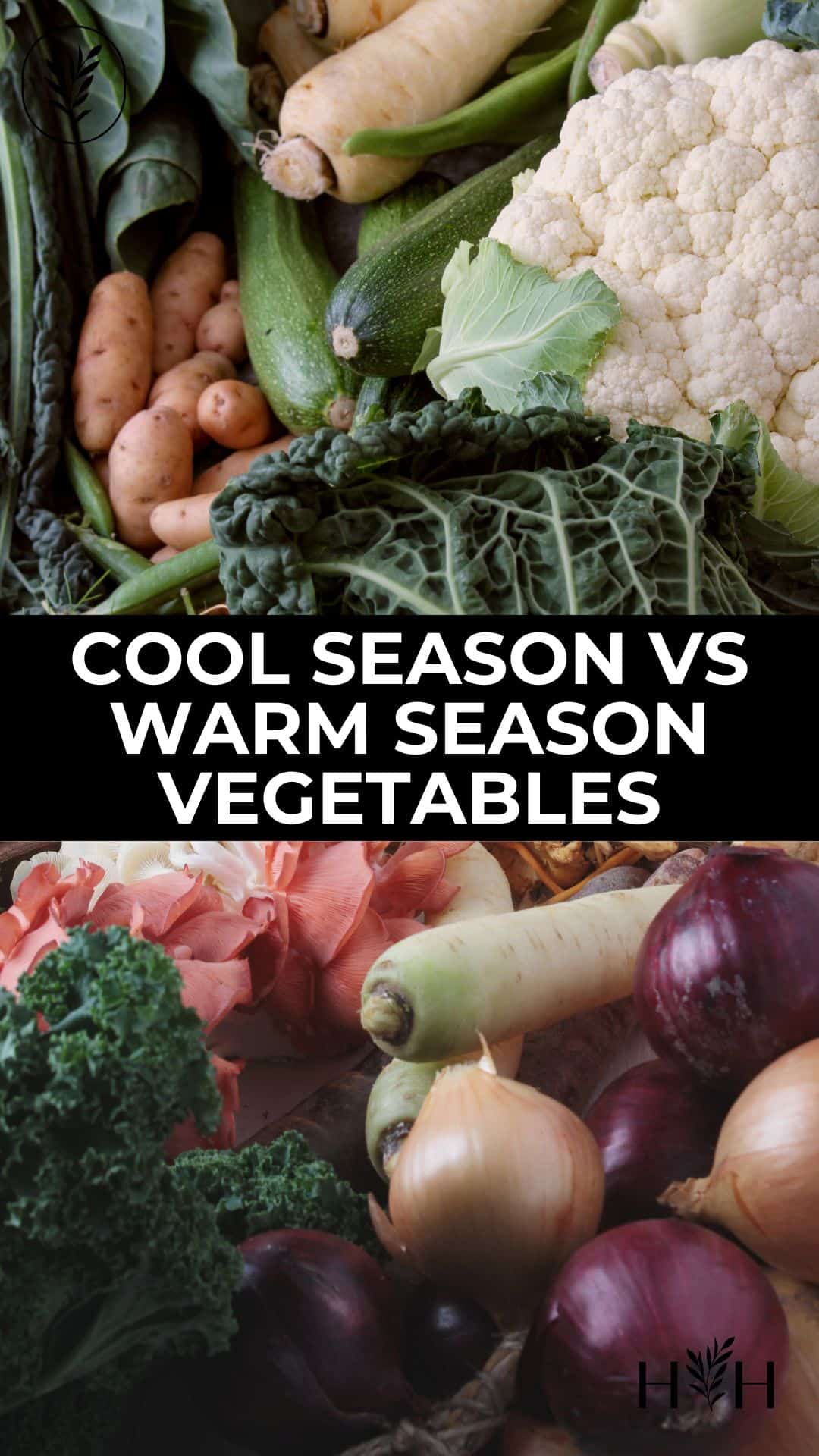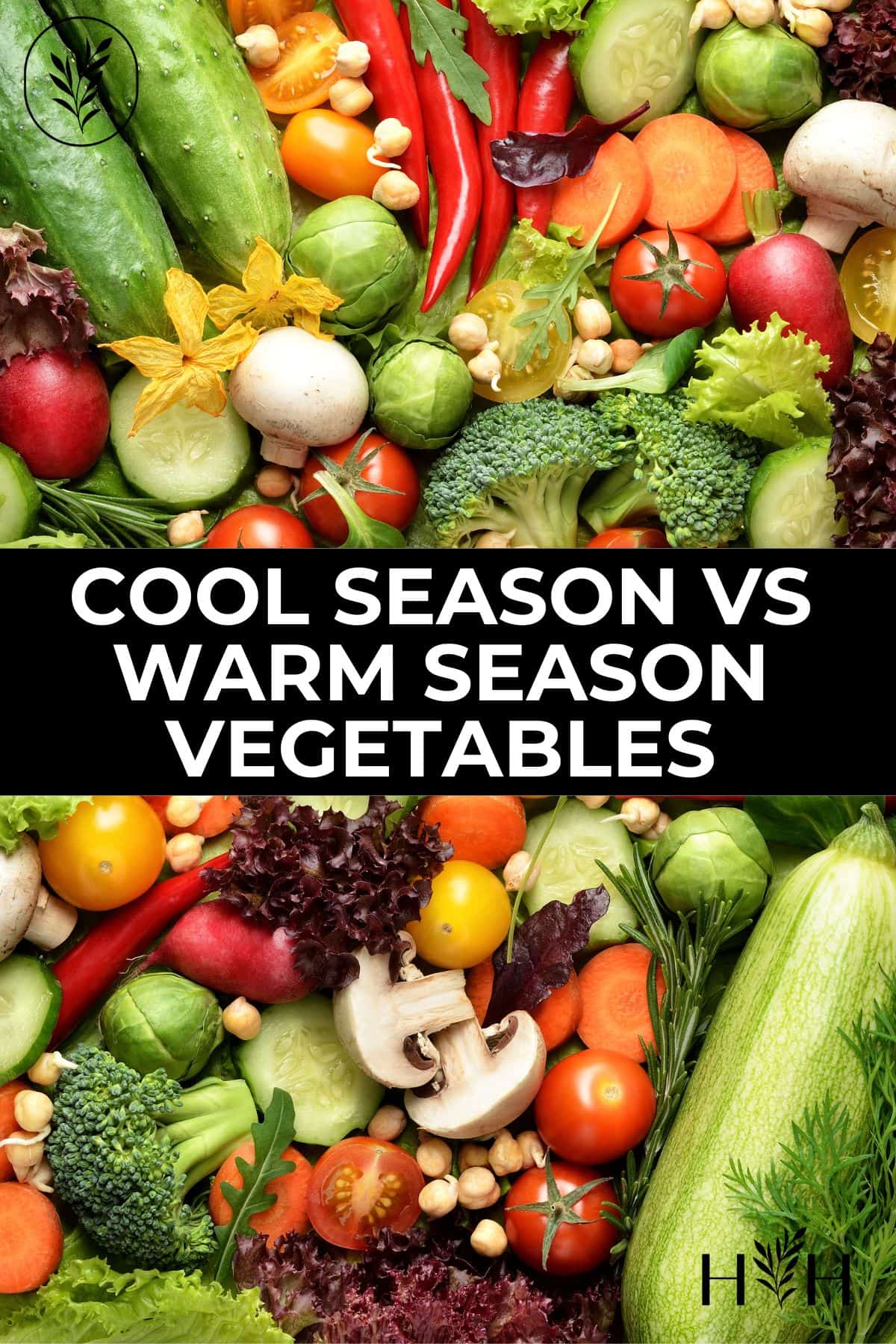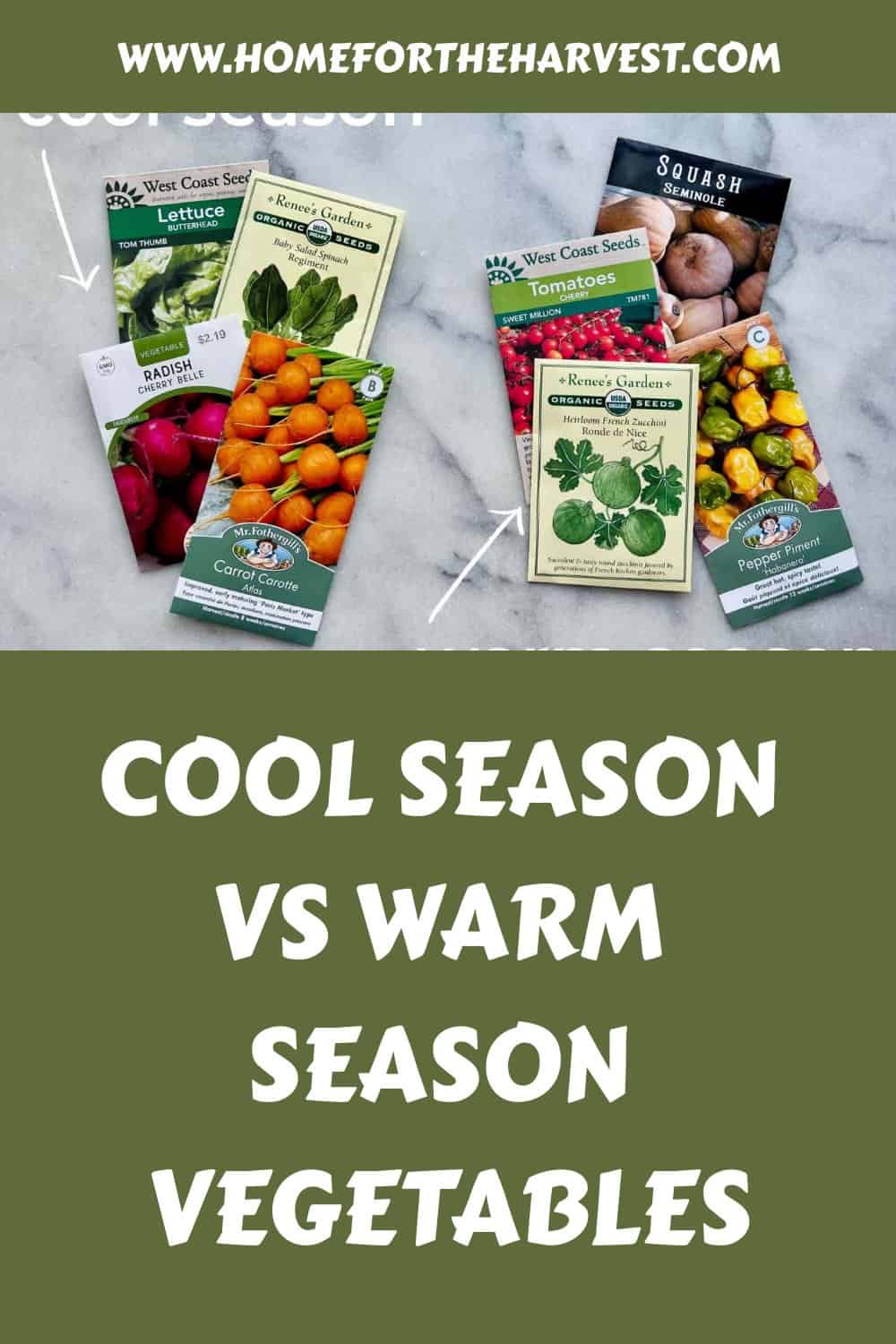Knowing when to sow your veggies is vital for a successful garden, so it’s essential to know the distinctions between cool and warm-season vegetables. Cool season vs warm season vegetables have different temperature preferences that affect their growth rate and yield potential – so if you want delicious produce all year round then understanding these two types of veggies is key.
Cool season vs warm season vegetables
Cool-season and warm-season vegetables are two distinct categories of edible plants that require different planting times, temperature preferences, and other considerations. In general, cool-season veggies favor temperatures from 40-70°F, whereas warm-season vegetables prefer 60-95°F. Understanding the distinctions between cool-season and warm-season veggies is key to cultivating a productive garden year-round.
Cool-season vegetables such as lettuce, broccoli, and carrots have seeds that can germinate in cool soil temperatures. The plants do best when evenings are cool and daytimes aren’t too hot. Cool-season crops can be prone to pests and disease in warm weather.
Warm-season vegetables such as tomatoes, peppers, and pumpkins have seeds that require warm soil to germinate. The plants do best when days are long and hot and evenings are warm. Warm-season crops are damaged or even killed at temperatures at or below freezing.
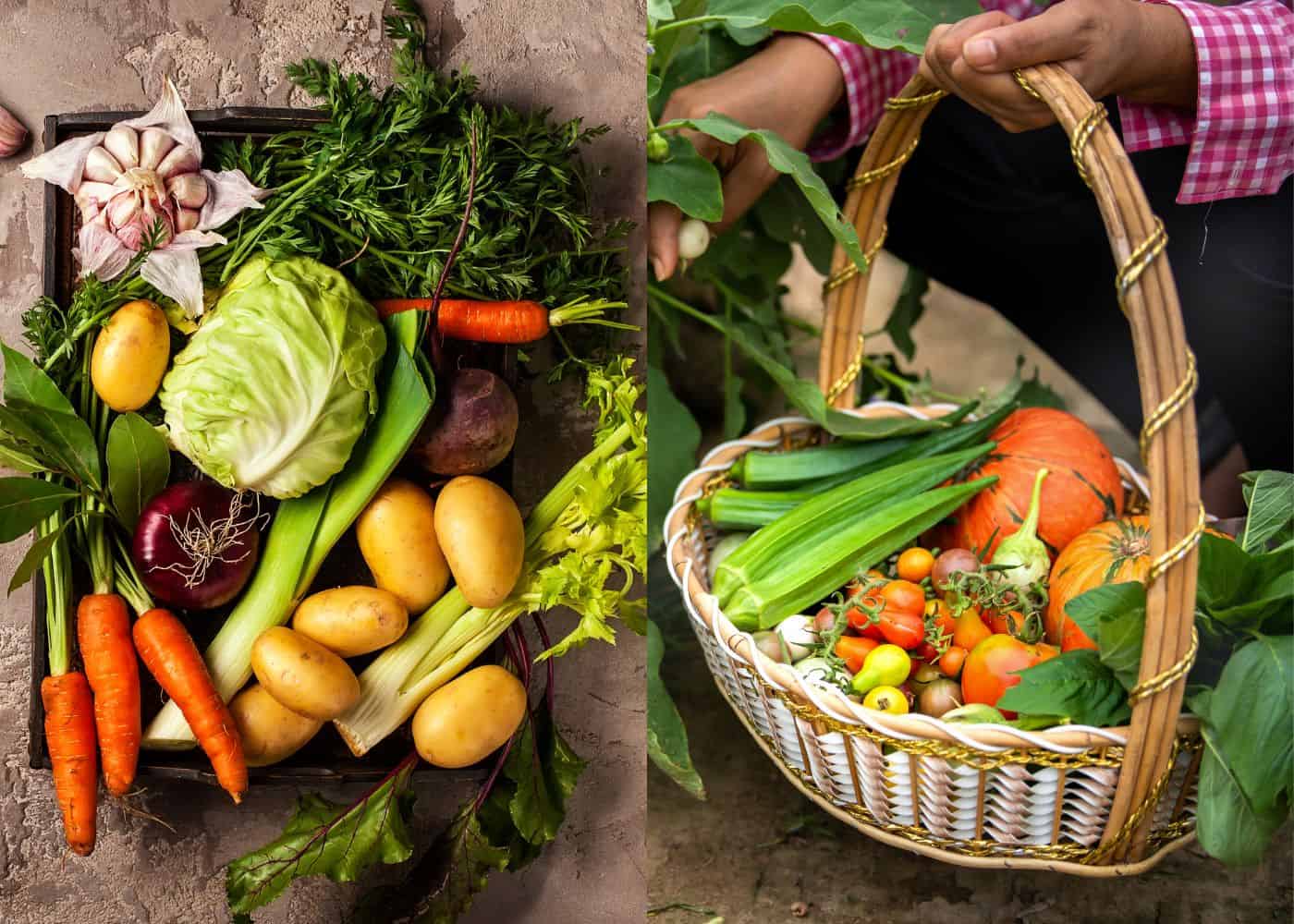
Cool-season veggies should be planted in early spring when temperatures are still relatively low; they’ll do best if they’re planted before the heat of summer sets in. Warm-season veggies should be planted once the soil has been heated to an ideal temperature of 65°F/18°C for several weeks, usually in mid to late May or early June.
Cool-season crops generally prefer cooler weather with daytime highs ranging from 50–70°F/10–21°C while nighttime lows hover between 40–55°F/4–13°C. On the other hand, warm-season crops need warmer air temperatures ranging from 60–85°F/16–29°C with nighttime lows no lower than 55 °F/13 °C for optimal growth conditions.
Besides temperature preferences, there are other important factors to consider such as light requirements; some cool-season varieties may need more hours of direct sunlight per day while others will tolerate partial shade better than full sun exposure. Additionally, certain types of fertilizers may work better for either type so it is important to research which ones will give your plants what they need most. Lastly, some species may require additional support such as staking or trellising so make sure you check into those details too before planting them in your garden.
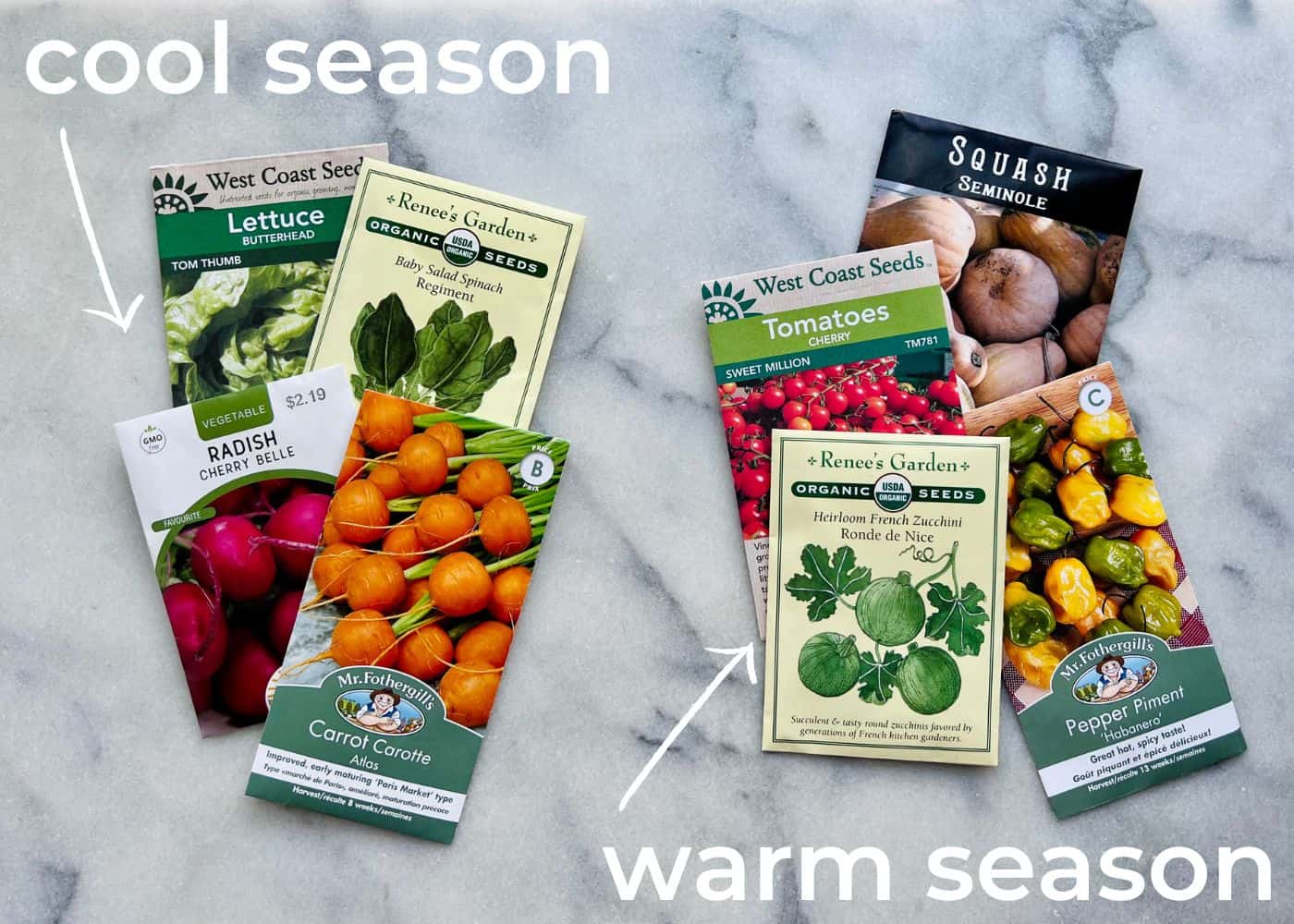
List of cool-season and warm-season vegetables
Here is a list of cool-season and warm-season vegetables:
Table 1: Cool-season and warm-season vegetables
| Cool-season vegetables | Warm-season vegetables |
|---|---|
| Artichoke, Asparagus, Beets, Bok Choi, Broccoli, Brussels sprouts, Chive, Cabbage, Cardoon, Carrot, Cauliflower, Celeriac, Celery, Chard, Chicory, Cress, Daikon, Dandelion, Endive, Escarole, Fennel, Garlic, Horseradish, Kale, Kohlrabi, Leek, Lettuce, Mustard, Onion, Parsley, Parsnip, Peas, Potato, Radicchio, Radish, Rhubarb, Rutabaga, Salsify, Scallions, Shallot, Spinach, Swiss Chard, Turnip. | Beans, Cantaloupe, Corn, Cowpeas, Cucumber, Eggplant, Muskmelon, Okra, Peppers, Pumpkin, Soybeans, Squash, Sweet Potato, Tomato, Watermelon, Zucchini. |
Cool-season vegetables are those that prefer cooler temperatures and can withstand light frosts. These vegetables include lettuce, spinach, kale, cabbage, cauliflower, broccoli, Brussels sprouts, radishes, and peas.
Warm-season vegetables are those that require warmer temperatures to grow properly. These include tomatoes, peppers (both sweet and hot), eggplant, squash (summer or winter), beans (green or wax), okra, and cucumbers.
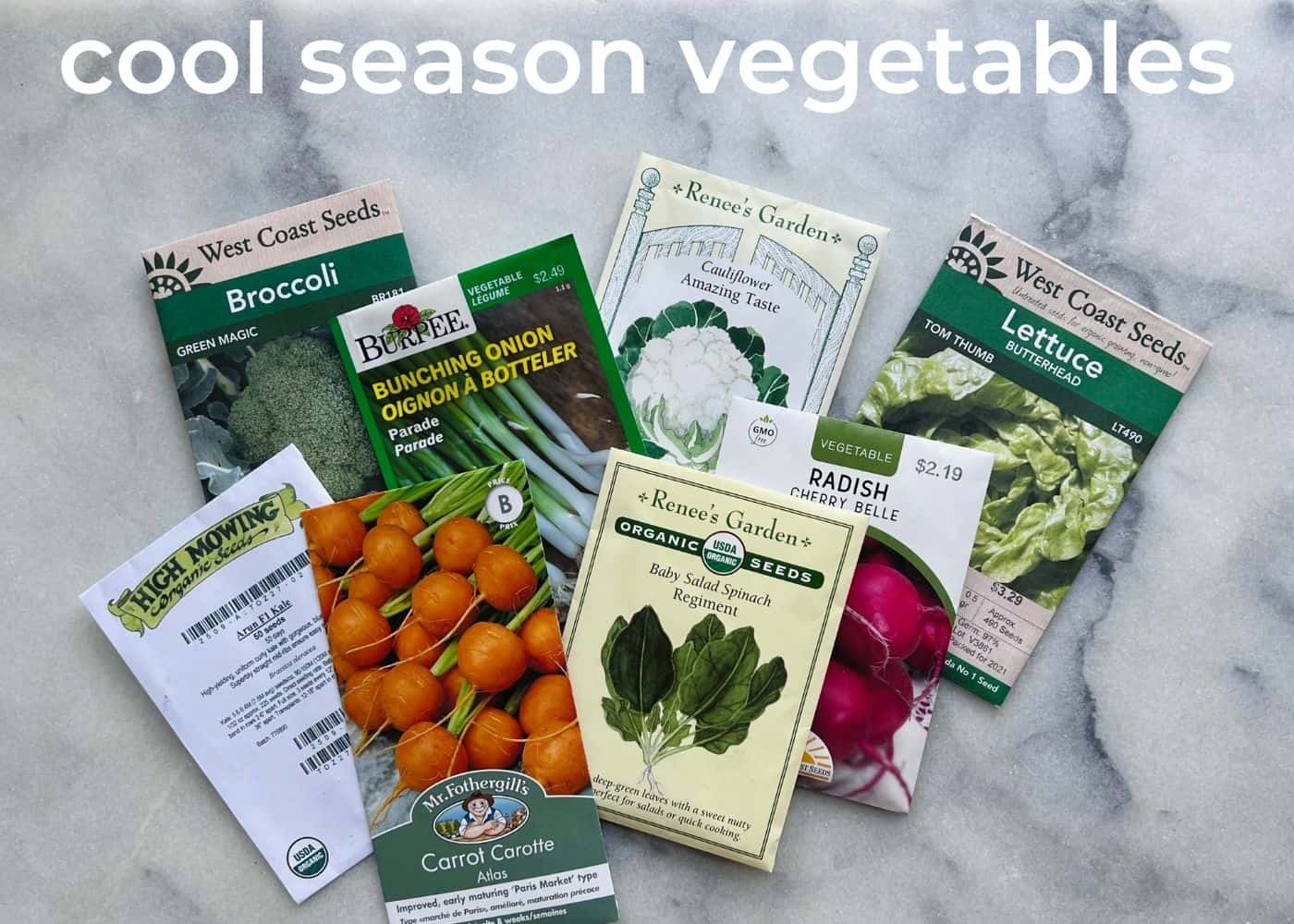
When to plant cool-season vs warm-season vegetables
Cool-season vegetables prefer cooler temperatures and can withstand some frost. Vegetables such as broccoli, cauliflower, kale, lettuce, spinach, and peas prefer cooler temperatures and can tolerate some frost. These vegetables should be planted when temperatures are moderate, typically between 50-65°F (10-18°C).
Cool season vegetables typically mature faster than warm-season vegetables; many take only 30-60 days from seedling stage to harvest whereas some warm seasons take up to 90 days or more. Additionally, most cool seasons don’t mind colder weather while most warm seasons will suffer damage if exposed to even one night below 50°F. This means that gardeners living further north must plan carefully if they want success with both types.
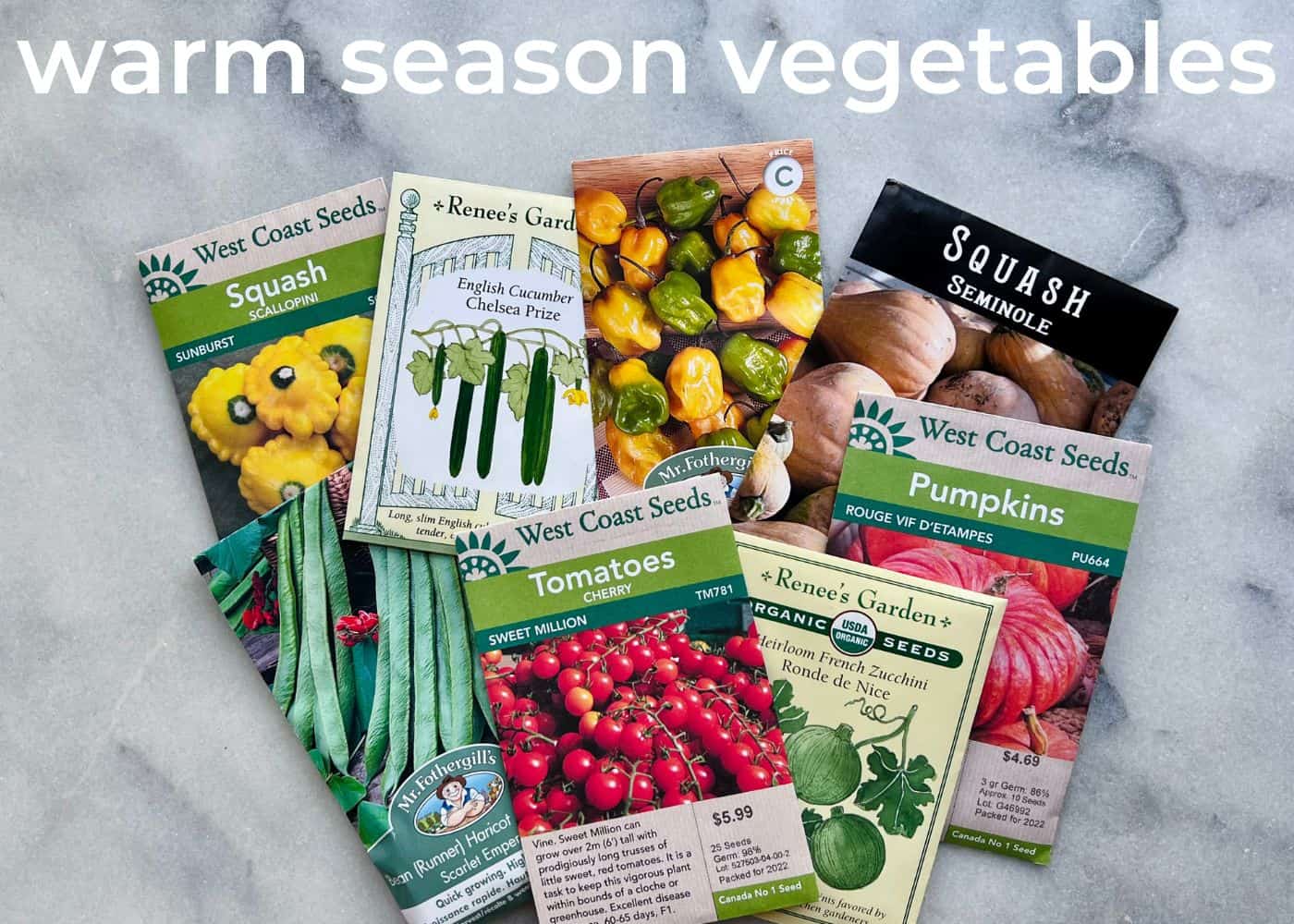
Warm-season vegetables require warmer temperatures of 65-85°F (18-29°C) to thrive. Examples of warm-season vegetables include tomatoes, peppers, eggplants, cucumbers, and squash. Planting these crops too soon may result in stunted growth or death due to cold weather conditions. Therefore they should be planted after all danger of frost has passed – usually mid to late spring for most areas in North America depending on your climate zone.
It is important to note that both cool-season and warm-season vegetables will benefit from a layer of mulch applied over their root systems once planted as this helps retain moisture during hot summer months, which will help them grow better. Additionally, adding organic matter such as compost or aged manure prior to planting also provides an extra boost for nutrient uptake, resulting in healthier plants with higher yields come harvest time.
Temperature preferences of cool season vs warm season vegetables
Vegetables such as kale, spinach, lettuce, carrots, radishes, and peas favor chillier temps of under 70°F (21°C). They can tolerate a light frost and will even thrive in colder climates. The plants can be prone to disease and pests at consistently warm temperatures.
Warm-season vegetables are those that need warmer temperatures to grow well; typically above 70°F (21°C). These include tomatoes, peppers, squash, and beans. They cannot tolerate frost and should be planted after the danger of cold weather has passed.
When planting cool-season vegetables it is important to consider their temperature preferences as they will not grow well if the temperature gets too hot or too cold for them. For example, lettuce prefers mild daytime temperatures between 50-70°F (10-20 °C) while peas do well in a wider range of 45-75°F (7-24 °C). Planting these crops during their ideal growing conditions ensures they produce a good harvest before the heat of summer arrives.
Warm-season vegetables also have specific temperature requirements for optimal growth but tend to be more tolerant of higher temperatures than cool-season varieties. Tomatoes love warm weather so look for days with highs in the 80s F (27 C) or higher when planting them outside; peppers require similar conditions although some varieties may survive slightly lower temperatures depending on the variety chosen. Squash does best when planted after all danger of frost has passed but still requires daytime temps over 60 degrees F (15 C) for successful production; beans prefer daytime temps between 65 – 85 degrees F (18 – 29 C).
In addition to considering average daily temperature ranges, there are other factors such as soil moisture levels that can affect plant health and productivity when gardening with either type of vegetable crop. Cooler soils retain moisture better than warmer ones, so mulching around plants helps maintain an even level throughout the day. This is beneficial, especially during periods of drought stress or extreme heat waves, which can cause damage due to rapid drying out or overheating root systems resulting in poor yields regardless of whether you’re dealing with cool-season or warm-season veggies.
FAQs about cool season vs warm season vegetables
What are three common cool-season vegetables and three common warm-season vegetables?
Cool-season vegetables include lettuce, carrots, and broccoli. Warm-season vegetables include tomatoes, peppers, and squash.
What is the importance of cool-season vegetable crops?
Cool season veg can endure chillier conditions, making them perfect for areas with shorter growing periods or colder weather. Cool-season veggies tend to have a longer harvest period than their warm-weather relatives, giving you the chance to get fresh produce earlier in the year. Additionally, they typically require less water and fertilizer than their warm-weather counterparts while still yielding a high-quality product that is rich in flavor and nutrients.
What is the definition of cool season vegetables?
Cool-season vegetables are plants that can tolerate cooler temperatures and generally grow best when the temperature is between 45-75°F. These crops typically prefer shorter days with less sunlight, such as in spring or fall, but can be grown year-round in mild climates. Cool-season vegetables include broccoli, cabbage, carrots, cauliflower, lettuce, onions, and peas. They are usually planted at the beginning of the season and harvested prior to summertime heat.
Before you go…
Planting times, temperature preferences, and other characteristics vary greatly between these two categories of vegetables. Being aware of which category your vegetable falls into can help you plan accordingly to ensure that it grows in optimal conditions with maximum yield potential. Cool season vs warm-season vegetables require different approaches when planning a garden; however, both types can be successfully grown at home.
Resources
- Winter crops: 28 cool-season vegetables for a year-round garden harvest
- Cool-weather vegetables to grow in your garden
- Vegetable varieties: Top recommended types for your home garden
- Summer crops to grow in your garden (warm-season crops)
- Vegetables to plant in August: Summer-planted veggies for the garden
- Summer vegetable gardening: Tips for a healthy hot-weather garden
References
- Sichynsky, T. (2023, February 23). 11 Winter Weeknight Vegetarian Recipes to Try Before the Season Ends. The New York Times. https://www.nytimes.com/article/winter-vegetables-recipes.html
- Pettygrove, A. Nutrient Management in Cool-Season Vegetables. UCANR Publications. https://books.google.com.ph/books?id=zCVSg2a4-90C
- Thorness, B. (2013). Cool Season Gardener: Extend the Harvest, Plan Ahead, and Grow Vegetables Year-Round. Mountaineers Books. https://books.google.com.ph/books?id=zCVSg2a4-90C
- Ferguson, M. H., MD (2023, March 3). Wait a bit longer to plant most warm-season veggies. Santa Maria Times. https://www.hammondstar.com/lifestyles/wait-a-bit-longer-to-plant-most-warm-season-veggies/article_5679a110-51eb-5874-a00a-fda08098d88c.html
- Arthur, J. (2022). Evaluation of Warm Season Vegetables Using Sustainable Production Practices. Mississippi State University.
Need more info?
Are you interested in learning more about cool-season vs warm-season vegetables? Here are our best articles about it!


